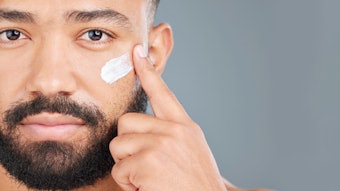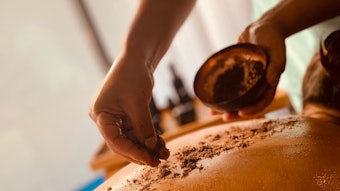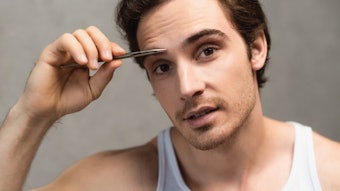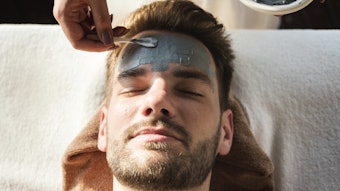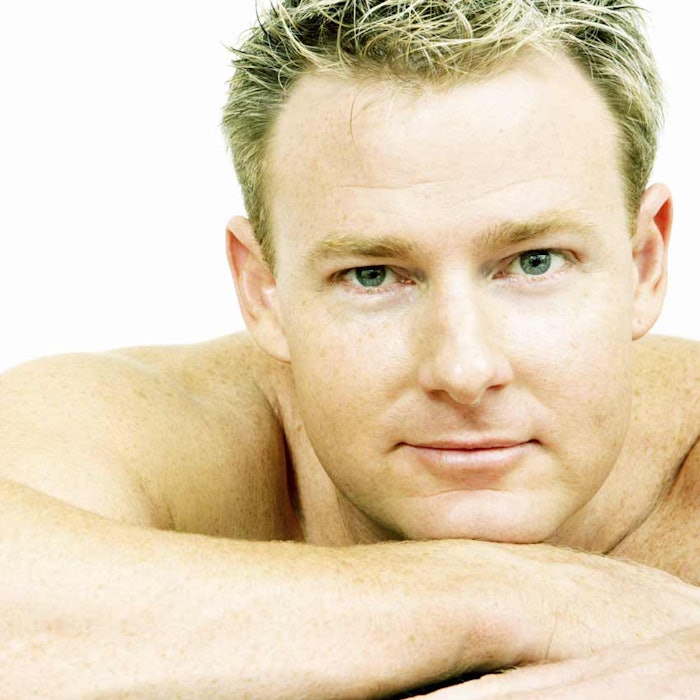
Men comprise nearly 40% of spa clientele, so chances are you see male faces on a regular basis. Whether you offer barbering services or just skin care for men, knowing the proper shaving protocol can help ensure healthy skin for your male clientele.
Shaving seems simple, but it takes strategic preparation. Analyzing the skin and evaluating hair formation can enhance one’s shaving experience. Without compromising technique, it is wise to consider how hair texture and hair growth pattern affects the skin when shaving. Shaving wrong can cause major problems and damage the skin. Both trained barbers and licensed skin professionals must find a more effective way to salvage the skin when shaving.
The History of Shaving
Shaving is a hair removal method used with a blade or razor dated back as early as 3,000 BC. Ancient Egyptian’s believed that body hair was shameful, and an unshaven man was seen as unclean and barbaric. Daily grooming was part of the Egyptian’s hygienic practice to prevent body infections and diseases. Because of the hot climate, Egyptian men, women and children shaved their heads bald, and facial hair was seen as personal neglect by the Egyptians.
Romans and Greeks found the Egyptians' personal hygiene protocol extreme, but later began to use individuals who were skilled at shaving, and the profession of "barber" was born. The word barber was derived from the Latin word barba meaning beard.
As humans became more civilized, shaving was seen as a way of societal lifestyle. Today, men visit their barber regularly or shave themselves to maintain a well-groomed appearance.
Before shaving can take place, it is vital to have a skin-friendly regimen to protect the skin. Because shaving is part of a man’s daily or weekly grooming regime, men must be gracious to the face by prepping the skin for shaving. Paying close attention to the hair texture and the direction of the hair growth can reduce problems that can damage the skin. Although women don’t shave as often as men, they should still prep the skin before shaving. Shaving wrong for both women and men can be problematic.
Hair Complexity
No man hair is created equal, as hair growth patterns vary from man to man. A man’s facial hair is different from his body hair; however, his facial hair may obtain several directional patterns. To reveal the growth pattern, one should section the hair area accordingly and rub. If the hair tends to be rough, that means its direction is the opposite of the direction rubbed. Men hair growth patterns show a distinction from women. Unlike men, women lack facial hair, and their hair pattern grows consistent on the body. Although the shaving destinations for women differ from men, they too must take steps to protect the bikini, legs and underarms. Determining hair growth pattern can be challenging for the novice eye.
Like hair growth, hair texture can complicate shaving, especially for ethnic men. Ethnic men usually have a courser hair texture that coils, causing the hair to grow back into the skin if not properly shaved. The direction of the hair growth can be misleading because course hair tends to slightly curl. Shaving in the wrong direction can heighten the chances of ingrown hairs when dealing with ethnic skin. Caucasian skin may not experience ingrowns as often, but razor burn is a common problem because the hair is finer and straighter than course hair. Shaving course hair may require a sharper razor to effectively cut the hairs without going over the shaved area twice. Using a straight razor to shave the face takes skill and technique; therefore, services should be provided by a licensed barber. Some men prefer to dry shave with an electric razor because it is quick and easy, but the wet/hot shave with a straight razor works best for the skin, especially for courser hair textures.
Misguided shaving causes complications to the skin.
Misguided shaving causes complications to the skin such as pseudofolliculitis, hyperpigmentation, razor burn and even premature aging. Unclean razors and improper shaving are a few reasons why ingrown hairs appear. Pseudofolliculitis can be unsightly, painful and lead to hyperpigmentation for ethnic men if not treated correctly. Dealing with ingrown hairs is troublesome for both men and women of darker skin, yet razor burn for lighter skin is painful. Using dull razors and not using cream or oil to shave causes razor burn. Not using a pre-shave is abrasive to the skin and contributes to premature aging, which depletes the skin’s natural moisture.
Shaving shouldn’t be rushed. Before placing a razor or blade to the face, the client should lightly stoke the area to be shaved. Stroking the face in the direction of hair growth then lifting fingers through hair in the opposite direction for a few seconds will help them detect the texture and direction of hair growth. In addition, the touching helps stimulate the nerves to alert the skin.
Shaving Protocol
Before shaving, the right preparation will help protect the skin and following a strict grooming regimen between shaves will help preserve the skin for both men and women. Most clients seem to favor a wet shave using disposable or safety razor. Shaving wet is a better technique because it is less abrasive to the skin. Regardless of the technique approach, incorporating the steps below will allow for a better shave.
Wake Up. Get the blood flowing and splash warm water on the face. With damp face, light tapotement massage on face for a few seconds will reduce puffiness and get the circulation going.
Exfoliate. Exfoliation prior to shaving is a great way to care for the skin and prepare for shaving. Exfoliating help unclog pores, remove dead skin cells and open the hair follicle. It softens the hair shaft and cleans around the area to encourage a better shave. Wipe off with warm towel.
Pre-Shave. Use shaving cream or a product that lathers, facilitate the glide for a better shave. The pre-shave acts as a barrier to protect the skin from direct contact with the blade to reduce razor burn. Apply to the desired shaving area using a circular motion to lubricate the hairs. Begin shaving in the direction of hair growth using short strokes. Short stokes cover the wet area more efficiently, reducing clogging for less interruption and a cleaner shave.
Cool Water. Rinse with cool water, pressing with hands into skin. Rinsing with cool water closes the pores to reduce skin sensitivity and less irritation. Cool water calms the skin. Always use a soothing lotion or hydrating moisturizer immediately after shaving before the cool towel.
Post Shave. Apply soothing gel or light facial lotion to replenish and hydrate.
Between shaves. It is highly recommended to exfoliate regularly with a loofah sponge, exfoliating scrub or both to prevent skin problems for both men and women. Easy to use products make it less complicated for clients to willingly incorporate a few extra steps to help maintain healthy skin. Using a multifunctional line of products that can be used as a shaving regimen and skin care system will deliver the best results.
Knowledge if Power
Although shaving can be problematic, research show shaving may have some great benefits, as it is found to stimulate collagen production and encourages exfoliation for skin growth to decrease the aging process. Having a pre- and post-shave grooming regimen will help clients get a better shave at home and keep their skin healthy and problem free.

